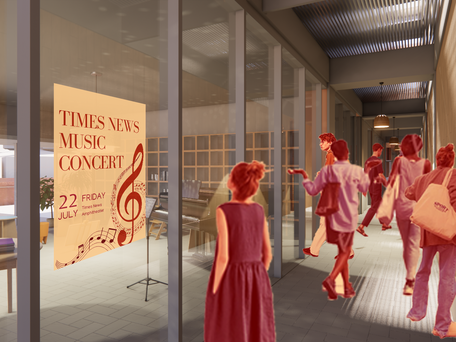
DISCOVER CUMBERLAND
FALL 2024
PROFESSORS- MIRIAM HARRIS, LEE ALTMAN & THADDEUS PAWLOWSKI
IN COLLABORATION WITH TZU YU (JASON) HUANG, SUZANNE ALPHONSE & TANISHKA KELKAR
COLUMBIA UNIVERSITY
PROJECT INTRODUCTION
Cumberland aims to increase its population to 30,000 by 2030 through revitalization efforts, and Discover Cumberland seeks to enhance the city's arts and culture. Our project reimagines the first impression of the city from the Western Maryland Scenic Railroad, which attracts 65,000 visitors annually. We are introducing a visitor village and Artistry Avenue, a streetscape initiative, to enrich their experience.
The cultural corridor will offer visitors and locals a fresh way to engage with the city through music, art, and culture, enhancing their interactions. Art connects us, and we aim to use the natural landscape and community spaces to deepen that bond. To us, this is more than just a project—and to them, it will always be it is home and thats why it was so important to us to showcase all that Cumberland has to offer and invite people to truly Discover Cumberland.
FULL PROJECT DESCRIPTION BELOW
FULL BOOK
We believe that art is a process—one that consists of making, showcasing, and celebrating—and it can serve as a driving force to increase visitor engagement in Cumberland.
The city brought us in to partner with them, but every year, the city already brings in people to experience its landscapes through the Western Maryland Scenic Railroad, which attracts over 65,000 visitors annually.
Cumberland has historically connected people to other parts of the country, but today, many visitors come for the railroad and don’t always know about everything else the city has to offer. That's where we see an opportunity.


Our vision for Discover Cumberland expands on the city’s Reimagine Cumberland proposal to revitalize the area. We propose a visitor’s village and streetscape intervention to transform this former transportation hub into a thriving space for locals and visitors.
Currently, the city is redeveloping Baltimore Street and redesigning River Park, both near the Scenic Railway. Our intervention will help link these projects.
With city guidance, we identified the Times-News site—located between these proposals—as a key space where the arts can bridge these areas and strengthen connections.


One of our key focuses is integrating marketing strategies that allow visitors and the community to easily access information about Cumberland and its offerings. Such as the website at the top of the page.
Using art as a guide, we can create experiences throughout Cumberland that connect people to the city’s past, present, and future. The city already has a history of bringing in artists to use its streets as a canvas. We envision a series of smaller proposals that enhance the arts throughout the city, such as showcasing art on street furniture and launching a river wall art initiative. These initiatives will allow people to leave their mark on the city and become part of Cumberland’s artistic landscape.
In addition to ongoing county initiatives to enhance the city’s scenic landscape, we envision a series of smaller projects that will integrate art throughout Cumberland. These include showcasing art on street furniture and launching a river wall art initiative, allowing people to leave their artistic mark on the city.

Our proposal serves two main groups: Scenic Railroad visitors and the local community, offering spaces like childcare, community areas, and flexible gathering spaces for exhibitions, workshops, and recreation.
While partially demolishing the Times-News building, we aim to preserve its legacy by maintaining a public-facing space where people can see its operations.
We plan to collaborate with local businesses—Charis Winery for a tasting bar, the Arts Council for exhibits and workshops, and The Loft for live music—supporting small businesses and the local economy.
Our goal is to create an open, interactive space where visitors can watch artists at work and enjoy live performances.

Beyond that, we have designed a range of public spaces on the first floor, including community gardens, wellness spaces, childcare facilities, and co-working areas. Meanwhile, on the opposite side of the building, there will be relatively private accommodations in the visitor’s village.
The space is intended to create a transition from the train station to Baltimore Street, featuring multiple forms of art—from food and music to theater and visual arts.

The space really aims to create a transition space from the Train station all the way to Baltimore Street, featuring multiple different forms of art such from foods to music and theatre to physical arts.

Art is what connected us to this city and made us feel at home. Now, we can use this proposal to connect the larger city.
This initiative is not just a marketing strategy to attract families for weekend trips—it is also a pilot project that builds on the natural and built environments to expand opportunities within Cumberland. In the future, we envision similar projects across Maryland and beyond.

To us, this is more than just a project. And to the residents—like Gino—Cumberland is home. That’s why we wanted to work with this town to showcase all it has to offer and invite more people to experience it in new, creative ways. Our goal is to help more people truly Discover Cumberland.













